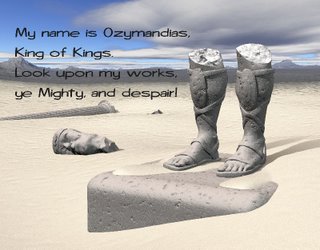About the poet: Robert Frost was born on 26th March 1874, in San Francisco. Frost and his wife Elinor Miriam moved to England in 1912, after they tried and failed at farming in New Hampshire. It was here that Frost met and was influenced by such contemporary British poets as Edward Thomas, Rupert Brooke, and Robert Graves.
Frost’s poetry is principally associated with the life and landscape of New England and he was a poet of traditional verse forms and metrics. However, he is anything but merely a regional poet. He is essentially a modern poet in his adherence to language as it is actually spoken, in the psychological complexity of his portraits, and in the degree to which his work is infused with layers of ambiguity and irony.
About the poem Fire and Ice: “Fire and Ice” is one of Robert Frost’s most anthologized poems. It was first published in December 1920 in Harper’s Magazine and then in 1923 in his Pulitzer Prize–winning book New Hampshire. According to one of Frost’s biographers, “Fire and Ice” was inspired by a passage in Canto 32 of Dante’s Inferno. In this passage the worst offenders of hell, the traitors, are submerged, up to their necks in ice while in a fiery hell. The eminent astronomer Harlow Shapley also claims to have inspired “Fire and Ice” in an anecdote he recounted in 1960 in a “Science and the Arts” presentation. Shapley describes an encounter he had with Robert Frost a year before the poem was published. At that time Frost, noting that Shapley was the astronomer of his day, asked him how the world will end. Shapley responded that either the sun will explode and incinerate the Earth, or else the Earth will escape this fate only to end up slowly freezing in deep space. Shapley was surprised at seeing “Fire and Ice” in print a year later, called it as an example of how science can influence the creation of art.
In a 1999 article, John N. Serio claimed that “Fire and Ice” is a compression of Dante’s Inferno. He drew a parallel between the nine lines of the poem with the nine rings of Hell. He also noted that like the downward funnel of the rings of Hell, the poem narrows considerably in the last two lines. Additionally, the rhyme scheme, he felt, is similar to the one Dante invented for Inferno.
Fantasy writer George RR Martin has said that the title of his series entitled A Song of Ice and Fire (which is the source of the TV phenomenon Game of Thrones) was partly inspired by the poem. The poem consists of 9 lines in total. These lines are not divided into stanzas. They are divided into meaningful segments for the purposes of this summary in order to make the poem easier to understand and follow.
Fire and Ice by Robert Frost Summary
Lines 1 – 2:
Some say the world will end in fire,
Some say in ice.
In these lines, the poet says that there are two theories held by the general populace about how the world will come to be destroyed. The first of these theories states that fire will cause the apocalypse to happen. That is to say, the earth’s core will heat up to an excruciatingly high temperature, then the heat will eventually reach the surface of the planet, and then everything on the surface will be incinerated beyond repair. The second theory says just the opposite. Instead of destruction by heat, this theory believes that the world will freeze till all the species of flora and fauna inhabiting it become extinct once and for all. Hence, this theory is based on the power of ice to obliterate living conditions on earth. The poet is aware of both these theories and will now proceed to weigh them against each other.
Lines 3 – 4:
From what I’ve tasted of desire
I hold with those who favor fire.
In these lines, the poet tries to outline the merits of the first theory – the theory about destruction of the earth by fire. He equates fire with human passion and desire. He also says that he is quite familiar with this concept of desire, and knows what it actions it is capable of producing in human beings. With this knowledge in mind, the poet frankly confesses that he agrees with those people who believe that the world will be burnt to a cinder.
Lines 5 – 9:
But if it had to perish twice,
I think I know enough of hate
To say that for destruction ice
Is also great
And would suffice.
In these lines, the poet stops discussing the first theory and goes on to talk about the second theory – the theory about the destruction of earth by ice. He does not discredit the first theory about fire, or withdraw his support for its greater possibility in causing the apocalypse. He simply considers what might happen if the earth were to be destroyed a second time. He is sure that the second time ice and the freezing temperatures it causes will be enough to destroy the earth as nearly and effectively as fire previously had. The poet then compares ice with hatred. He says that hatred is also an emotion that he is familiar with, and that he knows what kind of fanaticism can arise from hatred. With this knowledge, he comes to the conclusion that both an ice age and the coldness in man’s heart can cause the apocalypse for a second time.
Suggested Reading: Fire and Ice by Robert Frost Analysis, Theme of Fire and Ice by Robert Frost
Some online learning platforms provide certifications, while others are designed to simply grow your skills in your personal and professional life. Including Masterclass and Coursera, here are our recommendations for the best online learning platforms you can sign up for today.
The 7 Best Online Learning Platforms of 2022
- Best Overall: Coursera
- Best for Niche Topics: Udemy
- Best for Creative Fields: Skillshare
- Best for Celebrity Lessons: MasterClass
- Best for STEM: EdX
- Best for Career Building: Udacity
- Best for Data Learning: Pluralsight
















